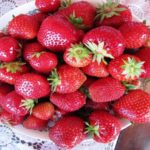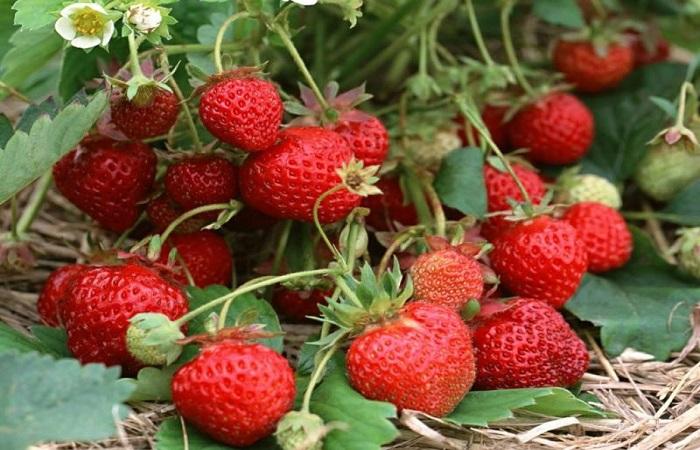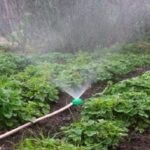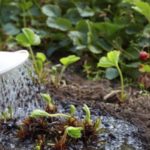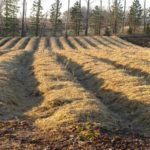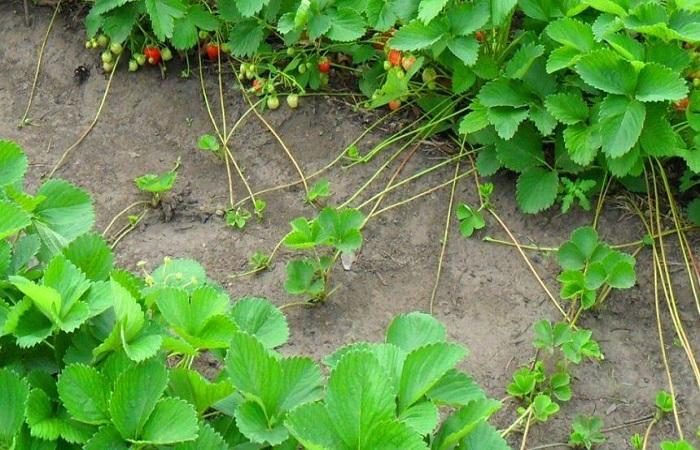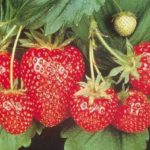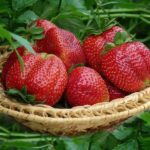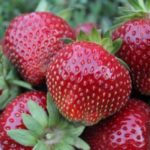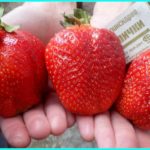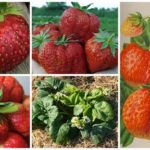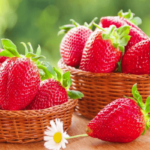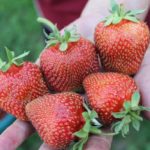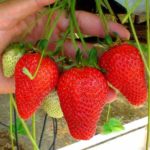Early varieties of garden strawberries are invariably popular with gardeners, because the plants are capable of producing berries that ripen first. Let's look at the characteristics of honey strawberries, growing rules, care features, how to treat plants against diseases, and prepare them for wintering. How to propagate the variety correctly, when to collect ripe berries, where and how to store them.
History of selection
The Honey variety, or Honey, was bred in America in 1979.by crossing the productive varieties Vibrant and Holiday. It was zoned on the territory of Russia relatively recently. Included in the State Register of Fruit Crops in 2013. It is recommended to cultivate this variety of strawberries in the central regions and the North Caucasus.
Description and characteristics of the Honey variety
Plants of the Medovaya variety are large, with large or medium-sized leaves. The petioles are long, at least 10 cm, with sparse pubescence on the surface. After flowering, the bushes produce cylindrical-conical berries. The color of the pulp is rich, red, with shine. The berries are moderately juicy, strongly sweet, and have a bright aroma, which justifies their name. There are no voids inside the berries. A special feature of the variety is that the taste intensifies as the berries ripen, so the last berries on the bush are tastier than the first.
Rules for growing strawberries
The Honey variety is resistant to disease and cold, does not require care, and takes root quickly in the garden. It tolerates heat and drought well, but is not resistant to waterlogging; fruits saturated with moisture quickly lose their presentation.
Strawberries of this variety prefer flat, elevated areas, fertile soil, loam or sandy loam with a neutral reaction.
Preparing the bed for planting: remove all weeds, crop residues, dig up, add a bucket of organic matter per meter, 2-3 tbsp. l. potassium sulfate and superphosphate or 0.5 kg of ash.Layout of bushes in the garden bed: at least 30 cm from each other. Time to plant plants in new beds: in spring (April) and autumn (September-October), at least a month before the arrival of cold weather.
Features of plant care
The Honey variety strawberries are grown using classical technology. The main thing to remember when growing is that you will have to provide the plants with moderate moisture, since they do not like either waterlogging or moisture deficiency.
Watering, loosening
Before rooting, young Honey seedlings are watered so that the soil is constantly moist, then the frequency of watering is reduced and the volume is increased. After the berries are ripe, watering should be reduced as much as possible to prevent them from cracking. Add water under the roots, do not pour it on the berry.
Top dressing
To fill the berries, Honey strawberries need food that will be constantly supplied to the plants. During the growing season, you need to carry out at least 3 feedings: the first - in early spring, when the plants begin to grow again, the second - after the start of flowering and the third, when half of the berries are already ripe. The fourth feeding is done in the fall, before the bushes go into winter. It is advisable to use organic matter for feeding, but mineral fertilizers are also possible.
Preventative treatment
Honey strawberries are treated with fungicides prophylactically, at the stage of bud formation, before flowering and after the berries are harvested. It is advisable to use biological products that have a short period before harvesting the berries.
Preparing for cold weather
Under the snow, Honey strawberries can withstand frosts down to -20 °C. Where winters are colder and there is little snow, plants need to be covered with sawdust, leaves, pine needles, other natural mulching material or agrofibre. The mulch should cover the bushes completely. Before covering, strawberries are pruned - all diseased and damaged leaves and old peduncles are removed.
Protection of crops from diseases and pests
If signs of diseases caused by fungi appear, the plants should be sprayed 2 times with fungicides containing copper. If pests appear, spraying is carried out with insecticides. As in the case of fungicides, insecticides are used 2 times with an interval of 2 weeks.
Reproduction of the variety
Honey strawberries are propagated by rooted tendrils or, in extreme cases, by cuttings of a bush. Young plants bear fruit for 2-3 years, after which they need to be replaced. The mustache is transplanted to a permanent place in the fall or spring, a month before the onset of frost or drought.
Cleaning and storage
Berries are collected as they ripen. Place in plastic food containers, wicker baskets or paper bags. Store in the refrigerator at low positive temperatures for a maximum of 1-1.5 weeks. Without refrigeration, Honey strawberries cannot be stored for more than 2 days. You can freeze the berries in the freezer; the shelf life is six months.
Honey strawberries are distinguished by their sweetness and strong aroma; they are grown using standard technology. But special attention should be paid to the amount of moisture supplied to the plants.The berries are suitable for eating fresh and can be used to make delicious homemade preparations.


